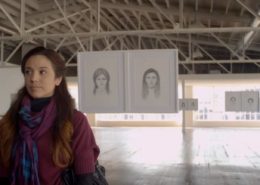 https://awesomevideomakers.com/wp-content/uploads/2017/04/ditch-the-script.jpg
865
1536
Brad Powell
https://awesomevideomakers.com/wp-content/uploads/2023/04/New-Awesome-Videomakers-Logo.png
Brad Powell2016-01-03 14:44:192024-09-26 15:17:19Step Four: Show the details
https://awesomevideomakers.com/wp-content/uploads/2017/04/ditch-the-script.jpg
865
1536
Brad Powell
https://awesomevideomakers.com/wp-content/uploads/2023/04/New-Awesome-Videomakers-Logo.png
Brad Powell2016-01-03 14:44:192024-09-26 15:17:19Step Four: Show the detailsWhat kind of video camera is best?
The first question that almost everyone asks when they start thinking about making videos is, “What kind of camera should I use?”
People believe that if they just had the right equipment, they would be able to make great videos. But this is not true. It’s not about getting great gear.
Making great video is about being able to tell great stories and engage in a good conversation. So, what’s the best camera to use?
The one you have (in your pocket).
Your little smartphone cameras provides good quality images and it’s so simple, it’s a good choice – especially if you’re just getting started (and you already own one). The spontaneous and portable nature of your smartphone, the availability of some excellent image processing apps and the ability to share the work with a wider audience, makes it a powerful and liberating tool, capable of some surprising results.
So, use the camera you have.
Camera makers don’t want you to know this, but the truth is, it doesn’t really matter what camera you’re using. Just pay attention to using natural light, framing your subject, the sound you’re getting – and most importantly, getting the right message on camera. So, go ahead and grab your smartphone and start shooting.
Here are some basic tips for using your smartphone to shoot video:
-
- Raise your phone up so that it’s at the same level as your eyes. You’ll be even more good looking if you do this. You can use a large box or a stack of books or – what I use – a smartphone desktop tripod that’s portable & mounts almost anywhere.
- Position yourself near a window so that the natural light hits the front of your face – instead of indoor lights hitting the top of your head. Overhead lights = very harsh + deep lines + grumpy looking face.
- Last tip: Use a remote microphone. It’s critical to have good sound and good sound comes from positioning yourself very close to your microphone. The problem is that if you you use the microphone on your phone then you’ll end up too far away to capture a good sound recording – you’ll sound hollow and far away. The simplest solution is to get a lavalier microphone like this Movo Lav mic that you can plug directly into your phone and then clip the small mike onto yourself.
The guys who made the “Intelligent Details” video (above) used a smartphone – plus some added gear to enhance their production.
They shot the whole thing with an iphone 5s – and then used an ipad for their editing.
Actually their client, Bentley, told them that they had to shoot the video with an iphone and then made them edit the video with the ipad airs that were installed in the back of the Bentley Mulsanne that was used for the shoot!
OK, it’s pretty cool to see far you can go with an iphone – especially when you have Bentley footing the bill.
They used two iPhone 5s’ that were mounted onto a BeastGrip case.
BeastGrip has lens adaptors that allowed them to use threaded lenses, including the Neewer 0.3X Baby Death 37mm Fisheye Lens, as well as the Schneider iPro lens.
For editing they used iMovie (free on an ipad), while the Filmic Pro iphone app was used to offer more control over the iphone cameras’ shooting abilities.
Make sure to watch the video above through to the end – where they show behind the scenes views with the equipment they were using.
The video is shot in a documentary style – a very simple set up – they interviewed two design executives from Bentley while they were riding in the car.
This made for a very informal, unscripted storyline. My one critique is that their story would have worked even better if they had talked more about their experience of riding in the car rather than just the features of the car.
Given that they were both riding in the back seat – not driving which was to call attention to the ipads that were cleverly installed – it seemed to imply that if you’re a Bentley owner then you won’t be driving your own car!?
One nice touch is how the video lives on the Bentley site itself – in which the video player framed as if you’re watching from within the car.







